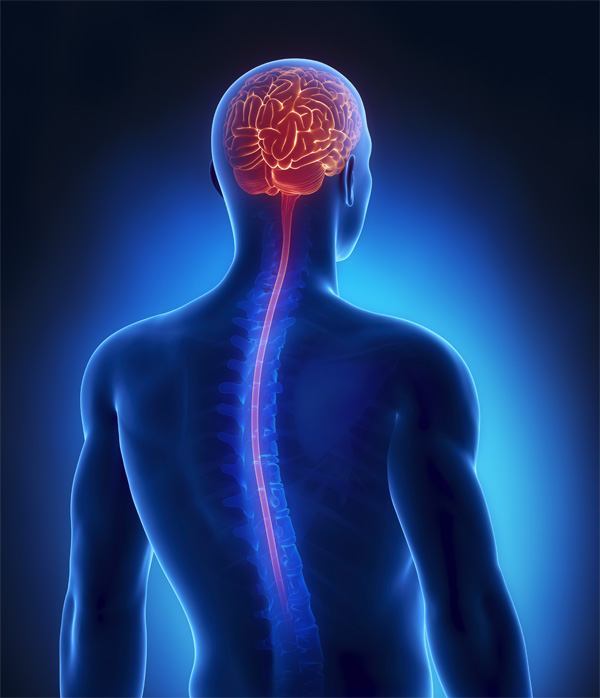Ground-breaking research indicates that chiropractic care may make your brain function better, according to the New Zealand Chiropractors’ Association (NZCA).
A collaborative study on the effects of correction of the spine on brain function between Denmark’s Aalborg University, the New Zealand Centre for Chiropractic Research, the Health & Rehabilitation Research Institute, AUT University and University of Ontario Institute of Technology, published earlier this year[1] in the journal Neural Plasticity suggests that, at least in part, the mechanisms by which spinal correction improves performance are due to a change in processing of information at the prefrontal cortex.
The focus of chiropractic care is on the health and integrity of the nervous system. The health and function of the spine affects the entire nervous system. We already know that the spinal cord is an integral part of the central nervous system and processes information just like parts of the brain do[2] and the latest New Zealand research into the effects of chiropractic care suggests that it may have an important role to play in improving executive function.’
Executive function is the mechanism by which the brain integrates and coordinates the operations of multiple neural systems to solve problems and achieve goals based on the ever-changing environment around us[3],[4].
 The researchers point out that executive function is considered to be a product of the coordinated operation of various neural systems and is essential for achieving any particular goal. The prefrontal cortex is believed to be the main brain structure responsible for enabling this coordination and control. It requires planning a sequence of subtasks to accomplish a goal, focusing attention on relevant information as well as inhibiting irrelevant distracters, being able to switch attention between tasks, monitoring memory, initiation of activity, and responding to stimuli[5].
The researchers point out that executive function is considered to be a product of the coordinated operation of various neural systems and is essential for achieving any particular goal. The prefrontal cortex is believed to be the main brain structure responsible for enabling this coordination and control. It requires planning a sequence of subtasks to accomplish a goal, focusing attention on relevant information as well as inhibiting irrelevant distracters, being able to switch attention between tasks, monitoring memory, initiation of activity, and responding to stimuli[5].
Dr Roper adds: `A change in prefrontal activity following chiropractic care may therefore explain and/or link some of the varied improvements in central nervous system function previously observed in other research, such as improved joint position sense error[6], reaction time[7], cortical processing[8], cortical sensorimotor integration[9], reflex excitability[10], motor control[11], and lower limb muscle strength[12].
`All this research, much of it from the New Zealand College of Chiropractic Centre for Chiropractic Research[13] and funded by the Australian Spinal Research Foundation strongly suggests that chiropractic care and NeuroStructural Adjustments can significantly improve brainbody communication and coordination.’
According to Dr Roper: `We know that chiropractic care assists brain function in many ways, one of which is proprioceptive function (perception) and this improves the accuracy of the internal brain map so your brain accurately knows what is occurring within your body and the surrounding environment continuously. Environment relates to the processes inside the body, as well as its immediate surroundings’.
This research gives weight to the important relationship between your spine and the nerve system, and the reason why we recommend regular spinal corrections, which can help the varied secondary conditions caused a NeuroStructural Shift (misalignment) of your spine.
Further Information:
Dr Edward Roper, Chiropractor 07 578 0875 or reception@precisionchiro.co.nz
Adapted from New Zealand Chiropractors Association Press Release, July 2016
[1] http://www.hindawi.com/journals/np/2016/3704964/abs/
[2]http://www.queensu.ca/gazette/content/spinalcordprocessesinformationjustareasbrain
[3] S. Funahashi and J. M. Andreau, “Prefrontal cortex and neural mechanisms of executive function,” Journal of Physiology Paris, vol. 107, no. 6, pp. 471–482, 2013.
[4] E. E. Smith and J. Jonides, “Storage and executive processes in the frontal lobes,” Science, vol. 283, no. 5408, pp. 1657–1661, 1999.
[5] D. Pineda, A. Ardila, M. Rosselli, C. Cadavid, S. Mancheno, and S. Mejia, “Executive dysfunctions in children with attention deficit hyperactivity disorder,” International Journal of Neuroscience, vol. 96, no. 3-4, pp. 177–196, 1998
[6] H. Haavik and B. Murphy, “Subclinical neck pain and the effects of cervical manipulation on elbow joint position sense,” Journal of Manipulative and Physiological Therapeutics, vol. 34, no. 2, pp. 88–97, 2011.
[7] D. D. Kelly, B. A. Murphy, and D. P. Backhouse, “Use of a mental rotation reaction-time paradigm to measure the effects of upper cervical adjustments on cortical processing: a pilot study,” Journal of Manipulative and Physiological Therapeutics, vol. 23, no. 4, pp. 246–251, 2000.
[8] H. Haavik-Taylor and B. Murphy, “Cervical spine manipulation alters sensorimotor integration: a somatosensory evoked potential study,” Clinical Neurophysiology, vol. 118, no. 2, pp. 391–402, 2007
[9] H. H. Taylor and B. Murphy, “Altered central integration of dual somatosensory input after cervical spine manipulation,” Journal of Manipulative and Physiological Therapeutics, vol. 33, no. 3, pp. 178–188, 2010.
[10] E. Suter, G. McMorland, W. Herzog, and R. Bray, “Conservative lower back treatment reduces inhibition in knee-extensor muscles: a randomized controlled trial,” Journal of Manipulative and Physiological Therapeutics, vol. 23, no. 2, pp. 76–80, 2000
[11] P. Marshall and B. Murphy, “The effect of sacroiliac joint manipulation on feed-forward activation times of the deep abdominal musculature,” Journal of Manipulative and Physiological Therapeutics, vol. 29, no. 3, pp. 196–202, 2006.
[12] B. Hillermann, A. N. Gomes, C. Korporaal, and D. Jackson, “A pilot study comparing the effects of spinal manipulative therapy with those of extra-spinal manipulative therapy on quadriceps muscle strength,” Journal of Manipulative and Physiological Therapeutics, vol. 29, no. 2, pp. 145–149, 2006.
[13] Niazi IK, Türker KS, Flavel S, Kinget M, Duehr J & Haavik H. (2015) Changes in H reflex and V waves following spinal manipulation. Experimental Brain Research. In press. DOI: 10.1007/s0022101441935 URL link: http://link.springer.com/article/10.1007/s0022101441935

0 Comments